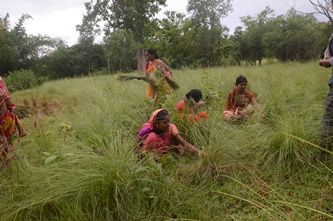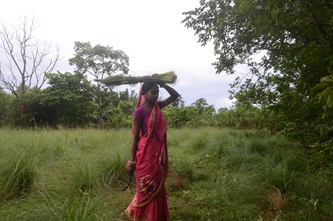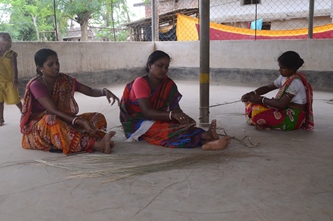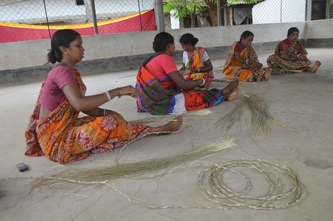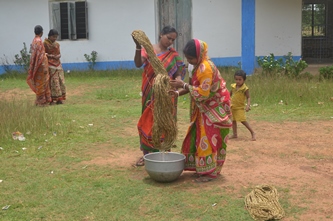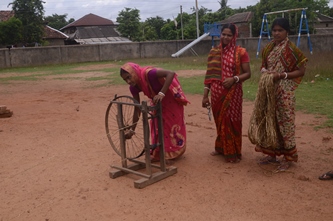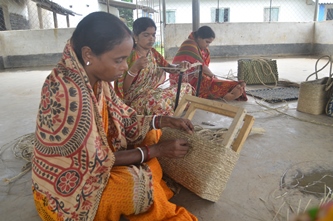Process
Harvesting
The whole production process begins with harvesting the grass in great amounts. After the grass is gathered, the weavers remove the broken, short and unwanted parts keeping the clean and complete ones for further use. The grass is sorted according to its length and quality
Softening the grass: After the grass is reaped, it is made ready for the next step. Thereafter they are thrashed on the floor properly, to make it soft and easy to be twisted. To further the softening process, the grass is soaked in water and kept for drying.
Forming ropes and Smoothening
After drying of the grass, they twist it in bundles to form ropes. The ropes are also made through a wheel twisting machine. One operates the machine and another one holds the rope from other side. The ropes formed have rough edges which are then removed after rubbing it on the branches of the trees to remove the extra edges and to make it smooth.
Dyeing: For usage of the grass in making diversified products the grass is dyed. The grass, ropes and braids are dyed as required. Water is boiled and the dye is mixed with water. The dye used for the process is an azo-free disperse dye and is the best for dyeing natural fibres like Sabai. The grass/ropes/braids are soaked in the water for 15-20 minutes. The coloured grass/ropes/braids are washed thoroughly. The dyed fibre is laid out to dry.
Bundles Ropes are made into bundles of about 250gm, 500gm, and 1 kg. Thereafter, begins the process of weaving and forming a variety of products.
Thali: Bundle of Sabai grass is held and tied together with another coloured dead palm leaf with the needle. They start stitching from the base and proceeds further on the top stitching it in the same manner. The application of stitches resembles chain stitch, one kind of Indian embroidered stitch. After this they do the edging i.e. when they close the stitches on the brim of the basket.Then they make the handle of the basket and stitch it on to the basket to complete the final product. There are two components. First the sabai braids are coiled to form a shape or base. Twisting is the process of finsihing the edges of the coiled braids using palm leaves.
Weaving The three districts involved in making Sabai differ in their weaving techniques. While some make braids, the other use date palm leaves and one district weave with the help of looms.
